Banner diseñado por mí en canva.com foto de mi álbum personal
Banner designed by me on canva.com Photo from my personal album
Este post da continuidad al taller de cuento, esta semana les hablaré de otra secuencia narrativa que podemos utilizar para hacer más convincente la historia que escribimos: la descripción. Probablemente ya la utilizas, pero en este post te ayudaré a ampliar el uso de la descripción, te comentaré los diferentes tipos de descripción que puedes utilizar.
¿Qué es la descripción?
Alexis Márquez Rodríguez define la descripción en La comunicación impresa como “dibujar o representar una cosa, de modo que de cabal idea de ella”, “representar personas o cosas por medio del lenguaje”. Dentro de un texto narrativo la descripción ayuda al lector en su proceso de imaginar quiénes son los personajes, cómo son, a qué ambiente pertenecen, en qué contexto se encuentran cuando ocurren los acontecimientos narrados.
Para escribir una descripción generalmente acudimos a nuestra memoria, a nuestras propias percepciones, pero igualmente podemos acudir a fotografías, y otras formas documentales como películas, o a descripciones de otras personas. No podemos olvidar que toda escritura de ficción crea su propio universo, lo importante es que cualquier descripción que hacemos en un texto narrativo debe ser coherente con la historia narrada y al universo social, cultural e incluso de época, al cual pertenecen los personajes. En un texto narrativo la descripción no es algo decorativo, da vida a los personajes y a su historia.
Tipos de descripción
Según el objeto descrito:
Personas:
rasgos físicos (rasgos observables, edad, color de la piel, contextura, vestuario, accesorios, postura del cuerpo)
rasgos psíquicos (personalidad, carácter, actitudes ante determinadas circunstancias, estados de ánimo, sus modales, su manera de hablar.)
rasgos sociales (cómo se relaciona con otras personas cuando está en grupo, una turba enardecida, los fanáticos de un artista, un grupo deportivo, los seguidores de un político.)
Es importante señalar que la descripción de una persona puede hacerse de manera directa, describiendo sus rasgos, pero así también puede hacerse de manera indirecta, describiendo sus acciones, por ejemplo, o a través de un diálogo, es decir, una conversación.
Grupos humanos: comportamientos de un determinado grupo en una situación particular.
Animales: rasgos físicos y de comportamiento que tienen importancia en la trama.
Descripción de objetos inanimados (aspecto físico, uso o valor). Se describen de acuerdo a su función dentro del relato, por ejemplo, un arma homicida en un relato de crimen, un objeto lujoso que se regala o se roba, unas flores que se obsequian).
Descripción de lugares y paisajes: rasgos físicos y percepción del personaje según la trama. Si es abierto o cerrado, conocido o desconocido, tranquilo o peligroso
Según los detalles que le damos a lo descrito podemos hacer dos tipos de descripción:
Exhaustiva: Se incluyen la mayor cantidad posible de datos, para que el lector tenga una imagen lo más clara posible del personaje, el objeto, el lugar.
Abocetada: Sólo se describen algunos rasgos esenciales.
Según se desea expresar cambios o no, la descripción puede ser:
Estática: Si quien describe y lo descrito permanecen en el mismo lugar o no sufren variaciones.
Dinámica: Si quien describe se mueve y lo descrito permanece en el mismo lugar, es decir, el personaje o narrador se acerca o aleja de lo descrito (un personaje, un lugar), en ese caso la percepción puede cambiar. O si ambos, quien describe y lo descrito están en movimiento, por ejemplo, un paisaje o una persona vistos desde un carro o un tren en movimiento. Así también, una descripción dinámica puede expresar el cambio de lo descrito con el paso del tiempo, una casa en ruinas que tuvo en otro tiempo esplendor, un personaje que era niño y ha crecido o que ha envejecido.
Lo más importante de una descripción que se utilice al escribir un relato es que sea necesario, que nos ayude a mostrar los personajes y su ambiente, o si se trata de animales, elementos de la naturaleza, objetos, tengan una función dentro de la historia. No se describe un reloj, a menos que el tiempo tenga importancia en la trama o sea un objeto de valor que podamos vincular con los personajes. ¿De acuerdo? Espero que la información que he compartido te sea útil. Gracias por tu lectura.
Les comparto links de los post previos del taller de cuento para que puedan consultarlos quienes tengan interés:
https://peakd.com/hive-145796/@beaescribe/zmlicxlh Secuencias narrativas: el diálogo
https://peakd.com/hive-145796/@beaescribe/rfknkuaf Los personajes y sus roles
https://peakd.com/hive-179291/@beaescribe/xdqivyjr Presentación del taller de cuento
Bibliografía consultada
Bal, M. Teoría de la narrativa. Madrid: Cátedra, 1998.
Calsamiglia, B. y Tusón A. Las cosas del decir. Barcelona: Ariel, 1999.
Márquez Rodríguez, A. La comunicación impresa. Teoría y práctica del lenguaje periodístico. Caracas: Ed. Síntesis, 1976.

English version
This post gives continuity to the story workshop, this week I will talk about another narrative sequence that we can use to make the story we write more convincing: the description. You probably already use it, but in this post I will help you to expand the use of description, I will tell you about the different types of description you can use.
Alexis Márquez Rodríguez defines description in “Printed communication as "to draw or represent a thing, so as to give a full idea of it", "to represent people or things by means of language". Within a narrative text, description helps the reader in the process of imagining who the characters are, what they are like, what environment they belong to, in what context they are in when the narrated events occur.
To write a description we generally turn to our memory, to our own perceptions, but we can also turn to photographs, and other documentary forms such as films, or to other people's descriptions. We cannot forget that all fiction writing creates its own universe, the important thing is that any description we make in a narrative text must be coherent with the narrated story and the social, cultural and even epochal universe to which the characters belong. In a narrative text, description is not something decorative, it gives life to the characters and their story.
Description types
According to the object described:
Persons:
physical traits (observable features, age, skin color, build, clothing, accessories, body posture).
psychic traits (personality, character, attitudes to certain circumstances, moods, manners).
social traits (how you relate to other people when you are in a group, an angry mob, fans of an artist, fans of a sports group, supporters of a politician).
It is important to note that the description of a person can be done directly, by describing his or her features, but it can also be done indirectly, by describing his or her actions, for example, or through a dialogue, i.e., a conversation.
Human groups: behaviors of a given group in a particular situation.
Animals: physical and behavioral traits that have importance in the plot.
Description of inanimate objects (physical appearance, use or value). They are described according to their function within the story, e.g., a murder weapon in a crime story, a luxurious object that is given or stolen, flowers that are given as a gift).
Description of places and landscapes: physical features and perception of the character according to the plot. Whether it is open or closed, known or unknown, quiet or dangerous.
Depending on the details we give to what we describe, we can make two types of description:
Exhaustive: As much information as possible is included, so that the reader has as clear a picture as possible of the character, the object, the place.
Sketchy: Only a few essential features are described.
Depending on whether you want to express changes or not, the description can be:
Static: If the person describing and what is described remain in the same place or do not undergo variations.
Sketchy: Only a few essential features are described.
Dynamics: If the describer moves and the described remains in the same place, that is, the character or narrator moves closer to or further away from the described (a character, a place), in that case the perception may change. Or if both the one describing and the thing described are in motion, for example, a landscape or a person seen from a moving car or train. Likewise, a dynamic description can express the change of what is described with the passage of time, a house in ruins that was once splendorous, a character who was a child and has grown up or who has aged.
The most important thing about a description to use when writing a story is that it is necessary, that it helps us to show the characters and their environment, or if it is about animals, elements of nature, objects, they have a function within the story. Do not describe a clock, unless the time has importance in the plot or is an object of value that we can link with the characters. Okay? I hope the information I've shared is helpful to you. Thank you for reading.
I am sharing links to the previous posts of the storytelling workshop for those who are interested:
https://peakd.com/hive-145796/@beaescribe/zmlicxlh Secuencias narrativas: el diálogo
https://peakd.com/hive-145796/@beaescribe/rfknkuaf Los personajes y sus roles
https://peakd.com/hive-179291/@beaescribe/xdqivyjr Presentación del taller de cuento
Bibliography consulted
Bal, M. Teoría de la narrativa. Madrid: Cátedra, 1998.
Calsamiglia, B. y Tusón A. Las cosas del decir. Barcelona: Ariel, 1999.
Márquez Rodríguez, A. La comunicación impresa. Teoría y práctica del lenguaje periodístico. Caracas: Ed. Síntesis, 1976.
Translation to english with Deepl.com








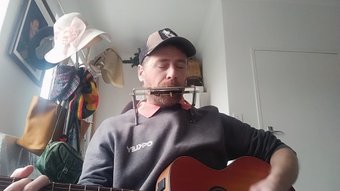

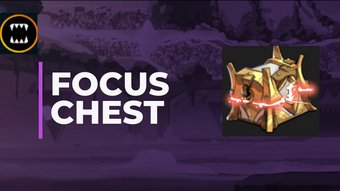




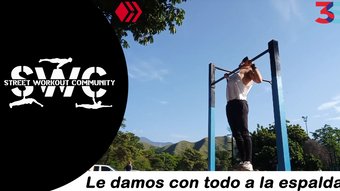

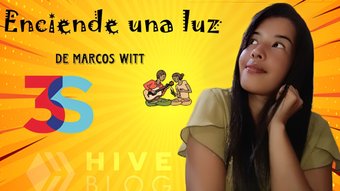






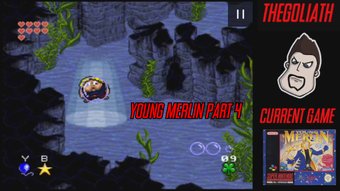




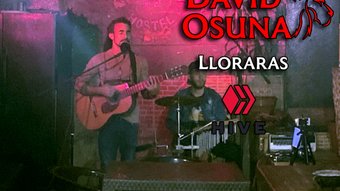
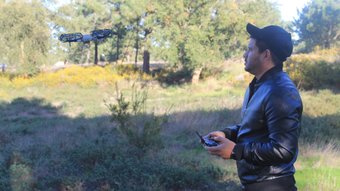
Comments:
Reply:
To comment on this video please connect a HIVE account to your profile: Connect HIVE Account